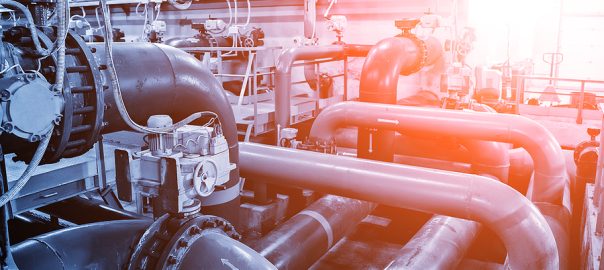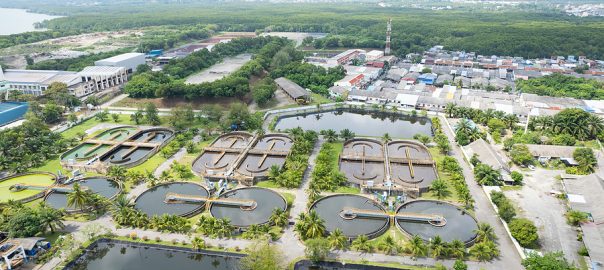
What is inorganic material in wastewater? Human waste, food scraps, and plants are organic in nature. They break down easily. Some materials that make their way into wastewater are not organic and do not decompose. Inorganic materials include soaps, nitrates, chlorides, phosphates, heavy metals, etc.
Some of the inorganics found in wastewater include cadmium, copper, lead, and mercury (heavy metals). They can come from older homes with copper piping and lead solder. There are non-metallic salts like arsenic and selenium. They can come from manufacturing plants, improperly disposed cleaning products, paints, and items like deicing products that are picked up in stormwater run-off when sewers and stormwater drains are connected.
Wastewater inorganics require careful removal to get them out of the wastewater before it’s released back to bodies of water or water treatment plants for community water supplies. What are the best ways to remove them?
Start With Trash and Screen Rakes
Wastewater is 99.9% water and 0.1% organic matter, inorganic matter, and microorganisms. It’s that 0.1% that wastewater treatment plants must remove before releasing it to rivers, ponds, lakes, or oceans or a water treatment plant that serves a community.
Some inorganic materials in wastewater may be large enough to remove using screens. This includes things that never should have been flushed or allowed to get down the sink, such as plastic tampon applicators, jewelry, condoms, toys, and plastic wrappers.
A screen will capture those items before they get into the wastewater treatment stages. Trash rakes remove them from the screens to ensure wastewater flow isn’t impeded. Screens can start with a large mesh and get smaller to ensure items of varying sizes are captured in this process. All of these items can then go to landfills for proper disposal.
Sequencing Batch Reactors Are Essential in a Wastewater Treatment Plan
A Sequencing Batch Reactor (SBR) offers a continuous feed process to help with the removal of nitrogen and phosphorus. Using aeration, oxygen helps break down organics. As the wastewater is aerated, microorganisms get to work feeding on nitrogen/nitrates and producing sulfate. Some wastewater treatment plants can capture methane produced during wastewater treatment and use it for heat
Sludge (solid materials) sinks to the bottom and can go to landfills or be turned into fertilizer for forests and fields. Sludge pumps are used to help get the sludge out of the tanks.
Enhance Your Systems Precision and Stability With SharpBNR
Your plant has workers, but it’s hard to predict how a day will go. Heavy rainfall, holidays, and even the pandemic can change how much wastewater flows from area homes and businesses. During the pandemic, more people worked from home and school children stayed home. People were home and using the toilet and sinks all day, which changed peak hours for higher flow rates.
There will be moments when flow rates increase and decrease. A SharpBNR control system continuously monitors for fluctuations and adjusts equipment to maintain proper operation. If there are issues that require human intervention, alerts go out.
Industrial Plants Should Consider Treating Their Wastewater Before It Goes to Sewers
If there are several industrial plants in your district, it’s time to consider having them put in water treatment equipment that pre-treats the factory’s wastewater before it goes to the sewer lines.
Package treatment plants are a great solution for industrial companies. The all-in-one plant includes screening, aeration, clarification, disinfection, and sludge removal in one tank. It’s an easily installed single system that doesn’t require a lot of space, making it ideal for established plants.
Explore the Pros and Cons of the Most Popular Removal Methods
- Adsorption
Polymeric adsorbents are one option for removing inorganic matter from wastewater. They’re generally low-cost and do a good job of removing heavy metals and balancing pH levels. Some of the most popular polymeric adsorbents include clay, zeolites (aluminosilicates often used in dietary supplements), and nanometal oxides.
Using the same process, there is ongoing research regarding the cellular structure of algae to help remove inorganic materials. Algae feed on nitrogen and phosphorus to grow. As algae grow steadily, they can become useful in other areas like algal biofuel.
- Bioelectrochemical
One area that’s gaining interest is bioelectrochemical systems. The energy present in organic matter becomes useful in generating power that oxidizes the pollutants. As contaminants are removed, electricity is generated. That electricity can change heavy metals like chromium from a soluble state to an insoluble one, making it easier to remove. With this process, denitrification can occur at a lower cost than some of the other methods.
- Chemical Precipitation
One option for treating inorganic materials is to add a chemical reagent to remove inorganics. This isn’t an ideal option as some of the reagents that are commonly used include ferric salts or lime. It ends up impeding sludge treatment, making it an ineffective option in any wastewater that also has organic materials.
- Ion Exchange
Ion exchangers replace calcium and magnesium with sodium ions. The process starts by passing wastewater through an anionic exchange resin that replaces the anions with hydrogen and hydroxide ions and creates molecules of water and then introduces sulfuric or hydrochloric acid.
The ion exchange resin layers are usually set below the flow of water. They can end up getting clogged, which isn’t ideal and needs to be addressed or you’ll end up with a malfunctioning ion exchange.
- Membrane Filtration
Ultrafiltration uses membranes to filter out inorganic materials. Wastewater is pushed through the filters using pressure. It’s an effective system, but it does reduce water pressure. It’s ideal for filtering colloidal and dissolved materials.
- Reverse Osmosis
Reserve osmosis requires wastewater to pass through a semipermeable membrane at high pressure, and that pressure is created using a pump. This causes contaminants within the wastewater to dissolve and separate from the water. The clean water continues flowing, but the contaminants are trapped in the membrane. This system is one you often see in homes.
Work With an Expert in Clean Water to Get Desired Results
Effective inorganic material removal starts with the right equipment. Lakeside Equipment has been designing, installing, upgrading, and maintaining water treatment solutions since 1928. We have close to a century of experience consulting with water treatment engineers, managers, and operators to ensure equipment does everything they need.
When you upgrade your wastewater system to meet new guidelines or need to improve your system’s efficiency or capacity, it’s important to work with a wastewater treatment specialist who can implement upgrades that meet your requirement without greatly increasing your budget. People in your district won’t appreciate a giant increase in their water bills, so you have to carefully plan upgrades and take advantage of grants.
Reach our experts by phone or online. Our online contact form is available 24/7 and makes it easy to get hold of Lakeside Equipment’s experts.





